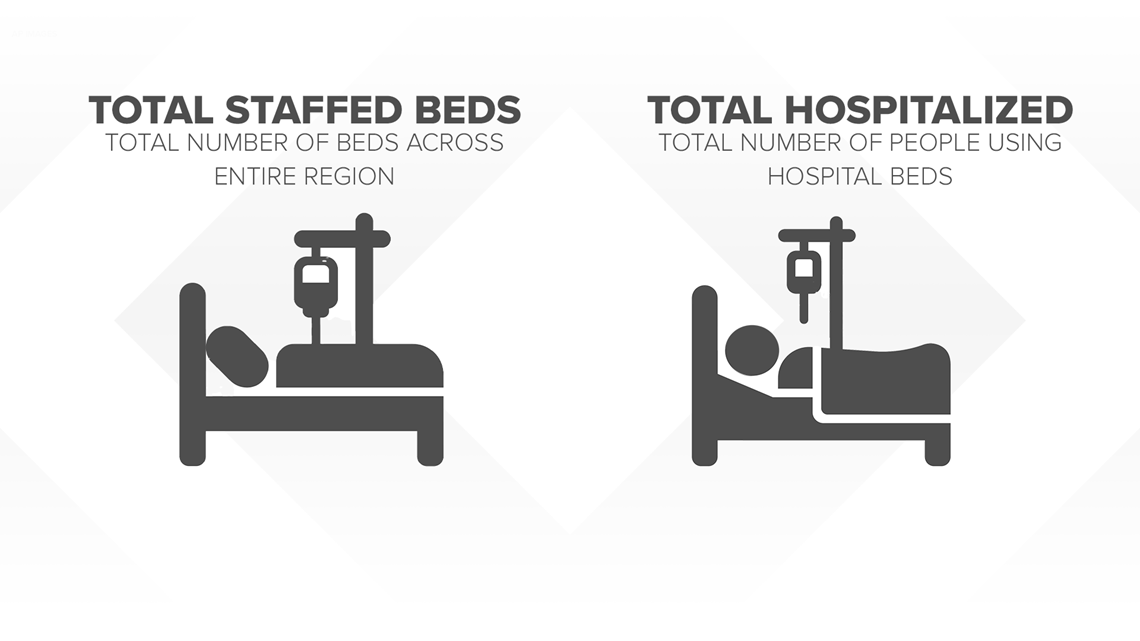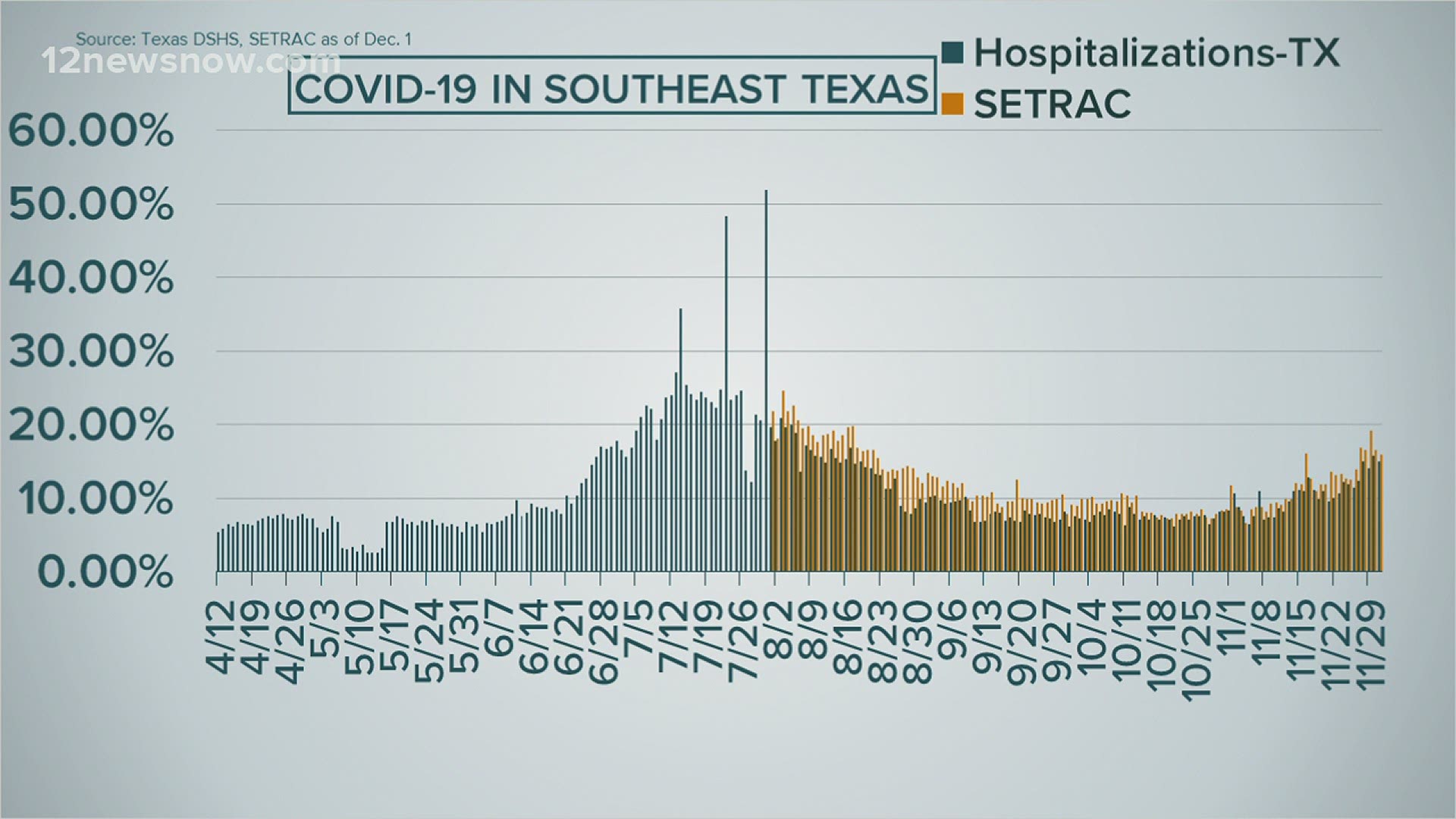BEAUMONT, Texas — The Southeast Texas Regional Emergency Operations Center announced Wednesday that areas in the state's Trauma Service Area R, which includes all of Southeast Texas, would not be forced to limit business capacity because the hospitalization rate was below the state threshold of 15%.
For the past five days, 12News has been reporting that the hospitalizations for TSA R has been surging and above 15%, a number identified by Gov. Abbott as the threshold the state would use to make decisions on capacity limitations.
On Tuesday, Jefferson County Judge Jeff Branick told 12News that the area should brace for business capacity to be reduced to 50% by Thursday based on hospitalization trends.
However, after a call between county judges included in TSA R and the Texas Department of State Health Services, local leaders learned that TSA R has only been above the 15% threshold once in the past seven days.
So, why was there such a discrepancy in the numbers?
Changes from the top
It all comes down to two executive orders signed by Governor Abbott.
Executive order GA 31 signed on September 17 says "'Areas with high hospitalizations' means any Trauma Service Area that has had seven consecutive days in which the number of COVID- 19 hospitalized patients as a percentage of all hospitalized patients exceeds 15 percent.
On October 9, the governor updated his executive order. GA 31 changed the words "all hospitalized patients" to "total hospital capacity".
That means the state's hospitalization rate was changed. Instead of dividing the number of patients with a positive COVID-19 diagnosis to the number of patients in the hospital, the state is now dividing the number of patients with a positive COVID-19 diagnosis to the number of all hospital beds available.


DSHS vs. SETRAC
Besides changing how hospitalizations are calculated, local leaders were also basing decisions from numbers different from ones DSHS is using.
Local judges and mayors across Southeast Texas were using data from the SouthEast Texas Regional Advisory Council (SETRAC).
SETRAC and DSHS are showing different hospitalizations as well as a different COVID hospitalization rate.
The agency includes lab-confirmed COVID-19 patients in addition to patients admitted to the hospital with a suspected case of COVID-19. DSHS only includes patients with a lab-confirmed diagnosis.
SETRAC is also calculating their COVID-19 hospitalization rate based on the number of suspected and confirmed patients with the virus divided by the total number of patients in the hospital.
On December 1, DSHS showed TSA R with a hospitalization rate of 14.91%. That included 282 patients with lab-confirmed COVID-19 and 1,891 "total staffed hospital beds".
SETRAC data only showed 241 patients in the hospital with COVID-19. That number, even though it includes both confirmed and suspected cases, is lower than the state's number. That number divided by the total number of patients in the hospital resulted in a hostpialation rate of 15.9%.


12News has reached out to SETRAC for clarification. They tell us they have been trying to work with the state to get numbers to match up.
They say they are not currently planning to change the way they report numbers. They say DSHS uses things like bassinets in calculating their "total staffed hospital beds" numbers, even though a bassinet would not be used for a patient with COVID-19.
Editor's Note
Since April, 12News has primarily used COVID-19 hospitalization data from SETRAC for numbers reported on air and online.
We made this decision after consulting with local leaders and local doctors.
After consulting with many of those same people today, we have decided to continue using SETRAC data. We feel it best showcases how COVID-19 is impacting our local communities and local hospitals.
Lamar University associate professor Dr. Praphul Joshi receives data daily from local hospitals and works closely with Judge Branick and other local leaders. He told 12News that he believes data from SETRAC is more accurate than what DSHS reports due to lags in data on the state dashboard.
We are putting our trust in Dr. Joshi's opinion because he is someone who crunches the numbers, quite literally, every single day.
We will continue to utilize DSHS data and report major trends. However, we feel that reporting two different numbers on a daily basis will be confusing to our viewers. Since the state calculations for hospitalizations are what will be used for decisions on scaling back business occupancy, we will begin reporting this hospitalization rate.
We are about #FactsNotFear. We want the people who live in Southeast Texas to be informed and educated about this virus.
We will continue to be transparent with you about our reporting because our mission is to continue putting Southeast Texas first!

